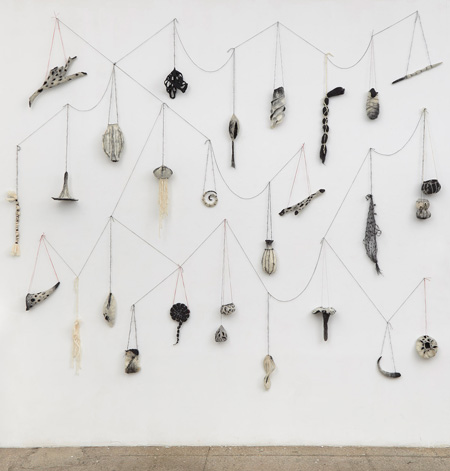| |
|
|
|
|
|
|
|
|
|
|
|
|
|
|
|
|||
| |
|
|
|
 |
|
|
||||||||||||
| |
|
|
|
|||||||||||||||
| |
|
|
||||||||||||||||
| |
|
|
||||||||||||||||
| |
|
|
|
|||||||||||||||
| |
|
|
||||||||||||||||
| |
|
|
|
|||||||||||||||
| |
|
|||||||||||||||||
| |
|
|||||||||||||||||
| |
|
|||||||||||||||||
|
||||||||||||||||||||||||||||||||||||||||||||||||||||||||||||||||||||||||||||||||||||||||||||||||||||
|
|
||||||||||||||||||||||||||||||||||||||||||||||||||||||||||||||||||||||||||||||||||||||||||||||||||||
|
|
Unartisanal || Back to exhibition |

Click the image to see another.
What Came Before, 2019, merino wool, mohair/silk yarn, linen thread, nails, 12' x 12' x 10"
Ruth Jeyaveeran is an artist, designer and educator based in Brooklyn, New York. In her art practice she uses wool to examine the relationship between craft, textiles, technology and human history. Her felted sculptures and wall hangings have been exhibited at various galleries throughout New York and she's been awarded residencies at La Napoule Art Foundation, PADA Studios and Jentel. Her most recent work, What Came Before -- an installation of hand felted wool sculptures -- explores the interconnectedness of objects in the material world. Presented in a "reverse taxonomy" these "artifacts" evoke archaeology, natural history and the sea, which hews all things down to their essence. In 2018, she was an advisor on sustainable textile practices for the Bio Design Challenge at the Museum of Modern Art, and a juror for the Nancy Konigsberg Fiber Art Award given by the Textile Study Group of New York. She created and curates Crafting Change an annual exhibit of textile-based work for New York Textile Month. Currently she's an Assistant Professor of Textile and Surface Design at the Fashion Institute of Technology. She has also taught courses in textiles and fiber art at Parsons School of Design. |
ABC No Rio: The Culture of Opposition Since 1980